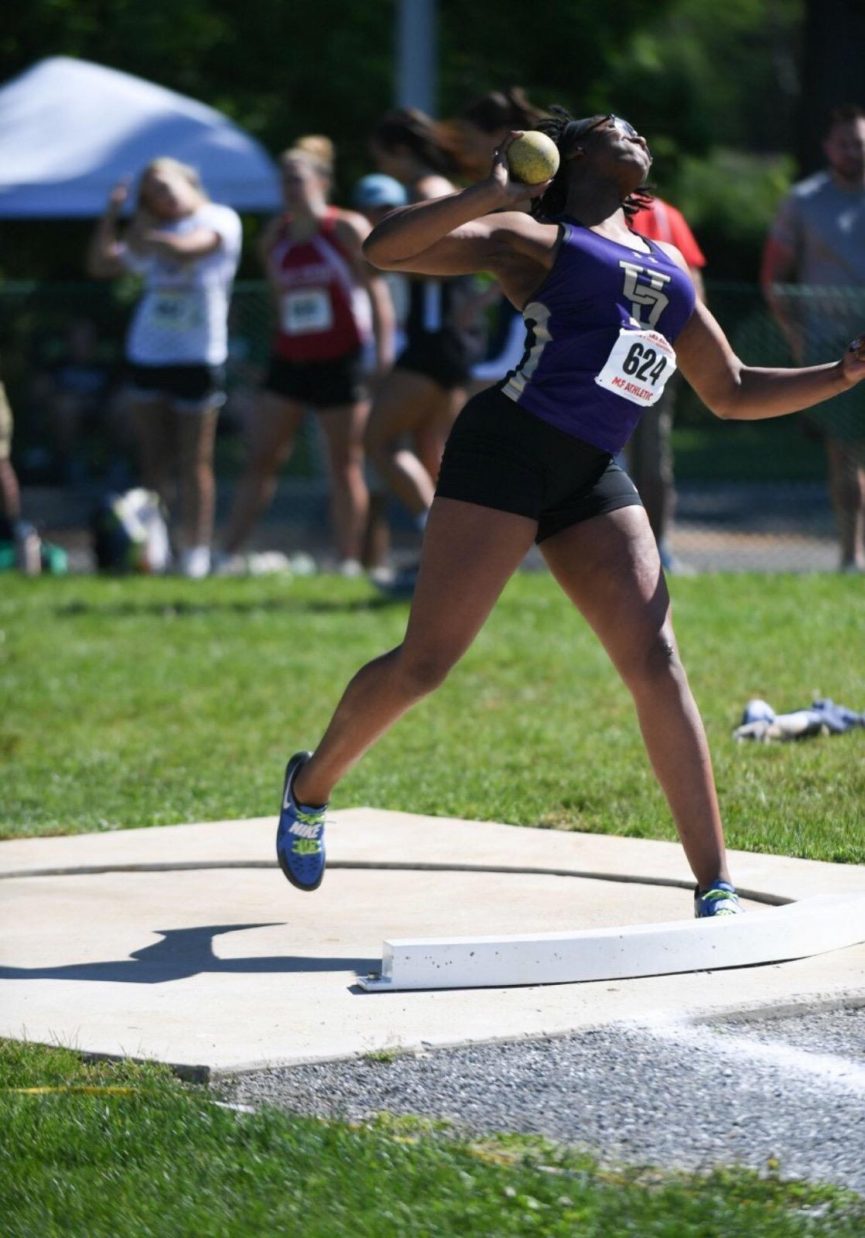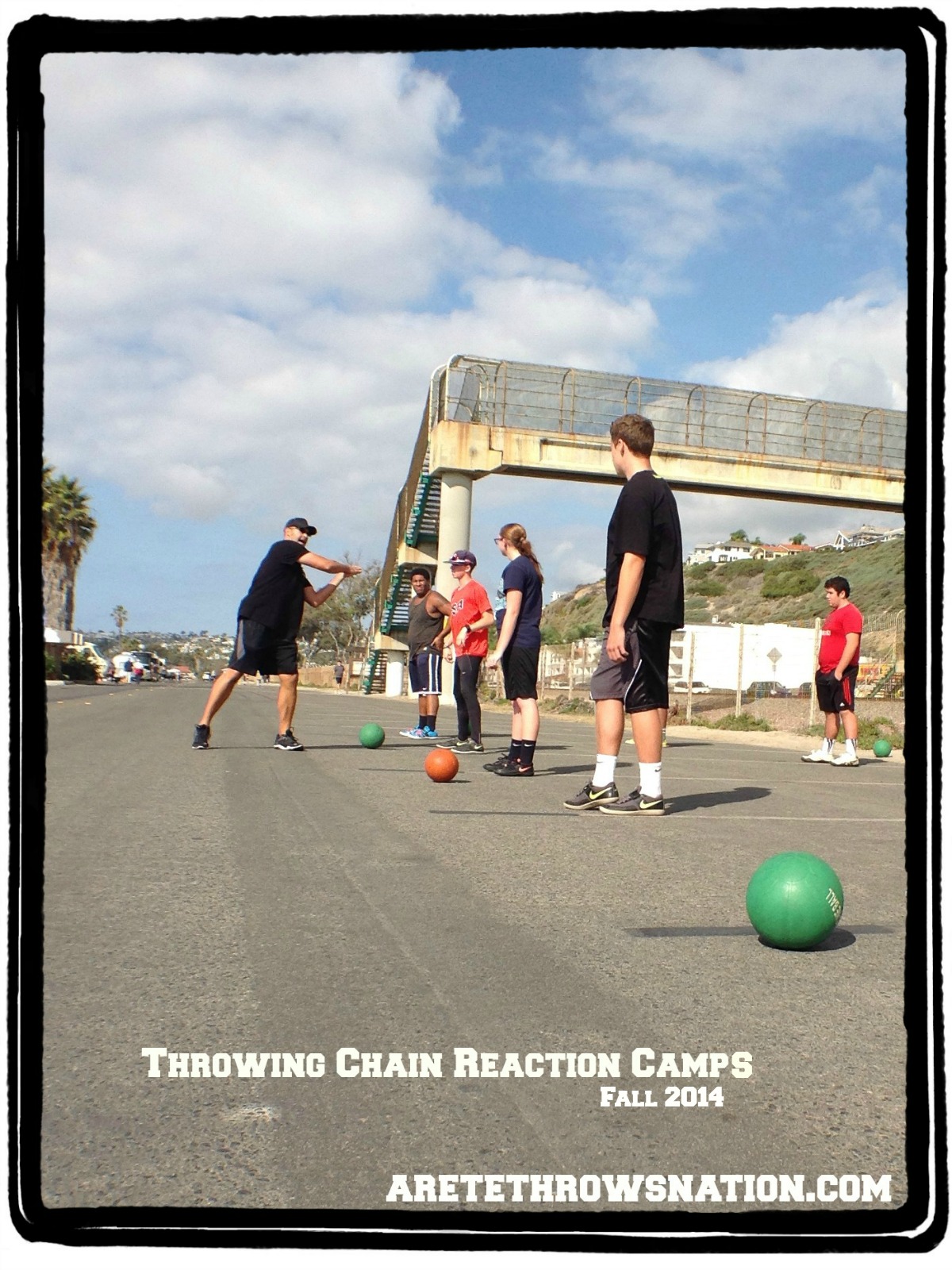

The shot remains back over the right leg to create a long path of acceleration during the delivery phase. The upper body and torso drop down during the unseating of the hips and extension of the left leg. After the left leg is extended, the right leg is actively driven toward the middle of the ring. The right leg falls down from the hip, rolling onto the heel of the foot during the extension of the left. The left leg is aggressively extended while staying low, aiming for the top of the toeboard. Next, the left leg extends and stretches across the ring as the upper body stays low. The upper body drops down from the preparation position as the lower body falls back or unseats from the waist. The glide shot put technique is a linear event keeping the shot near the center of mass will help eliminate unnecessary rotational movements associated with technical errors in the glide technique. The left arm is dropped down and extended out away from the body as the upper body bends over slightly, directing the shot over the right foot.įrom the preparation position, the thrower can use simple to more complex starting movements to generate momentum. The shot is then lowered to the neck and placed near the centerline of the body under the jaw with the elbow down.

The wrist is bent facing upward, with the shot resting on the base of the fingers. Most of the bodyweight will be on the right leg, with minimal weight on the left foot to maintain balance in the starting position.īoth arms are elevated overhead in the starting position then, the shot is placed above the right shoulder. The thrower faces the rear of the ring in an upright position with the knees together the left foot is placed slightly behind the right foot at the starting position. Gains of 10% to 20% from the standing throw are expected with an effective technical glide. The purpose of the glide shot put is to enable the thrower to get in an optimal power position and delivery position with more velocity directed into the shot than from a standing put. At major championships the format is typically a qualification session followed by a final.Shot Put and Discus Throw Technique The Glide Shot Put

In the event of a tie, the winner will be the athlete with the next-best effort. A shot putter requires strength, speed, balance and explosive power. The athlete, meanwhile, must not touch the top of the toe-board during their put or leave the circle before the ball has landed, and then only from the rear half of the circle. The results order is determined by distance.Īthletes will commonly throw six times per competition. In order for the put to be measured, the shot must not drop below the line of the athlete’s shoulders at any stage of the put and must land inside a designated 35-degree sector. The aim is to put it as far as possible from a seven-foot diameter (2.135m) circle that has a curved 10-centimetre high toe-board at the front. The shot, a metal ball (7.26kg/16lb for men, 4kg/8.8lb for women), is put – not thrown – with one hand. One of the four traditional throws events in track and field.


 0 kommentar(er)
0 kommentar(er)
